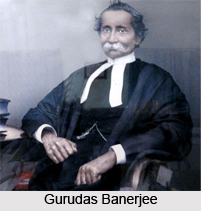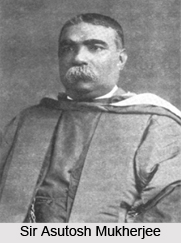 Calcutta Mathematical Society is a non governmental autonomous organisation of professional mathematicians of India in colonial era.
Calcutta Mathematical Society is a non governmental autonomous organisation of professional mathematicians of India in colonial era.
Dedication of Calcutta Mathematical Society
Calcutta Mathematical Society is dedicated to the interests of mathematical research and education in India. The Society has its head office located at Kolkata, West Bengal.
Governing Body of Calcutta Mathematical Society
The main governing body of Calcutta Mathematical Society is its Council, which is composed of the President, Vice-Presidents, Secretary, Treasurer, Editorial Secretary and Assistant Secretary (if required). These posts are nominated and elected by the members at the Annual General Meeting.
Establishment of Calcutta Mathematical Society
Calcutta Mathematical Society was established on 6th September 1908 under the stewardship of Sir Asutosh Mukherjee, the then Vice-Chancellor of Calcutta University.
First Body of Calcutta Mathematical Society
Calcutta Mathematical Society was the founder president of the Society, and was assisted by Sir Gurudas Banerjee, Prof. C.E. Cullis and Prof. Gauri Sankar Dey as Vice Presidents and Prof. Phanindra Lal Ganguly as the Founder Secretary of the organization. It is said that the founders were inspired by the structure and operations of the London Mathematical Society while forming this organization.
Teaching and Research in Calcutta Mathematical Society
Calcutta Mathematical Society from the colonial era since its foundation has fostered teaching and research of theoretical and applied mathematical sciences through several pedagogic and technical activities.
 Mathematicians of Calcutta Mathematical Society
Mathematicians of Calcutta Mathematical Society
It is honoured to be associated with legends like Albert Einstein, Anil Kumar Gain, S. Chandrasekhar, Abdus Salam and many more eminent scientists and researchers across the globe.
Academic Activities of Calcutta Mathematical Society
The main academic activities of Calcutta Mathematical Society can broadly be classified under the following three heads - Memorial Lectures, Special Lectures and Regular Seminars and Symposiums. The Memorial Lectures are organized by the Society every year in honour of great academicians who were once associates and patrons of the organization. The Special Lectures are given on request by eminent researchers and scientists who visit Kolkata from time to time. The Seminars and Symposiums are generally held on an annual basis, focusing on the Pedagogic and Technical topics as well as topics of popular interest. `International Symposium on Mathematical Physics in memory of S. Chandrasekhar with a special session on Abdus Salam is notable one.
Membership of Calcutta Mathematical Society
The membership of Calcutta Mathematical Society is categorized bases on the involvement of the members. The Honorary Members of Calcutta Mathematical Society are nominated from the pool of current researchers and scientists in the field of mathematical sciences. The Life Members and Ordinary Members of Calcutta Mathematical Society are elected by the standing members at the General Meetings. Calcutta Mathematical Society has a reciprocity relationship with American Mathematical Society and Cambridge Philosophical Society, whereby a member of one of the societies can become a member of the other by paying just half the subscription.
Related Articles
Kolkata
Culture of Kolkata
History of Kolkata
Economy of Kolkata
West Bengal
Monuments in Kolkata
Tourism In Kolkata



















